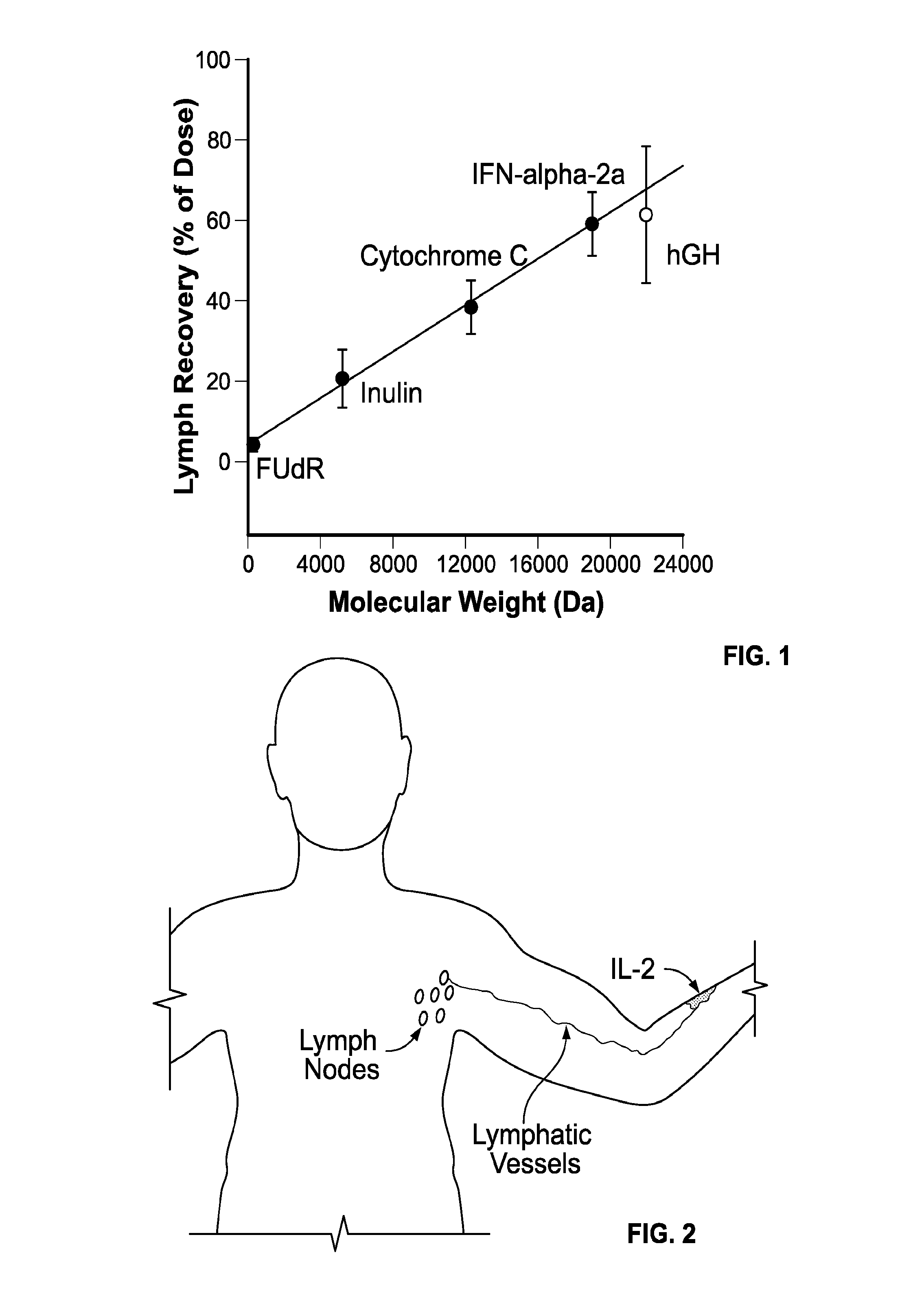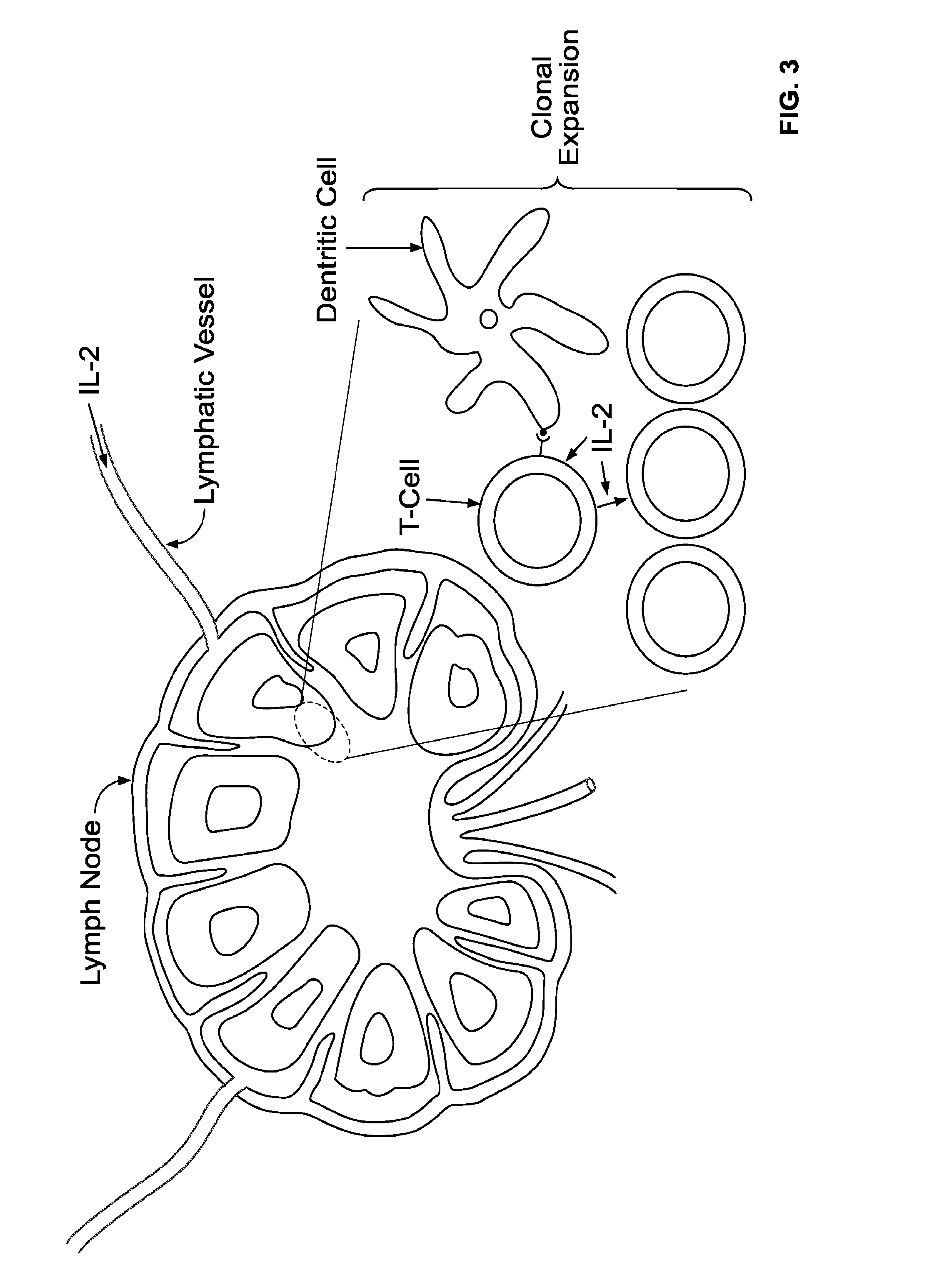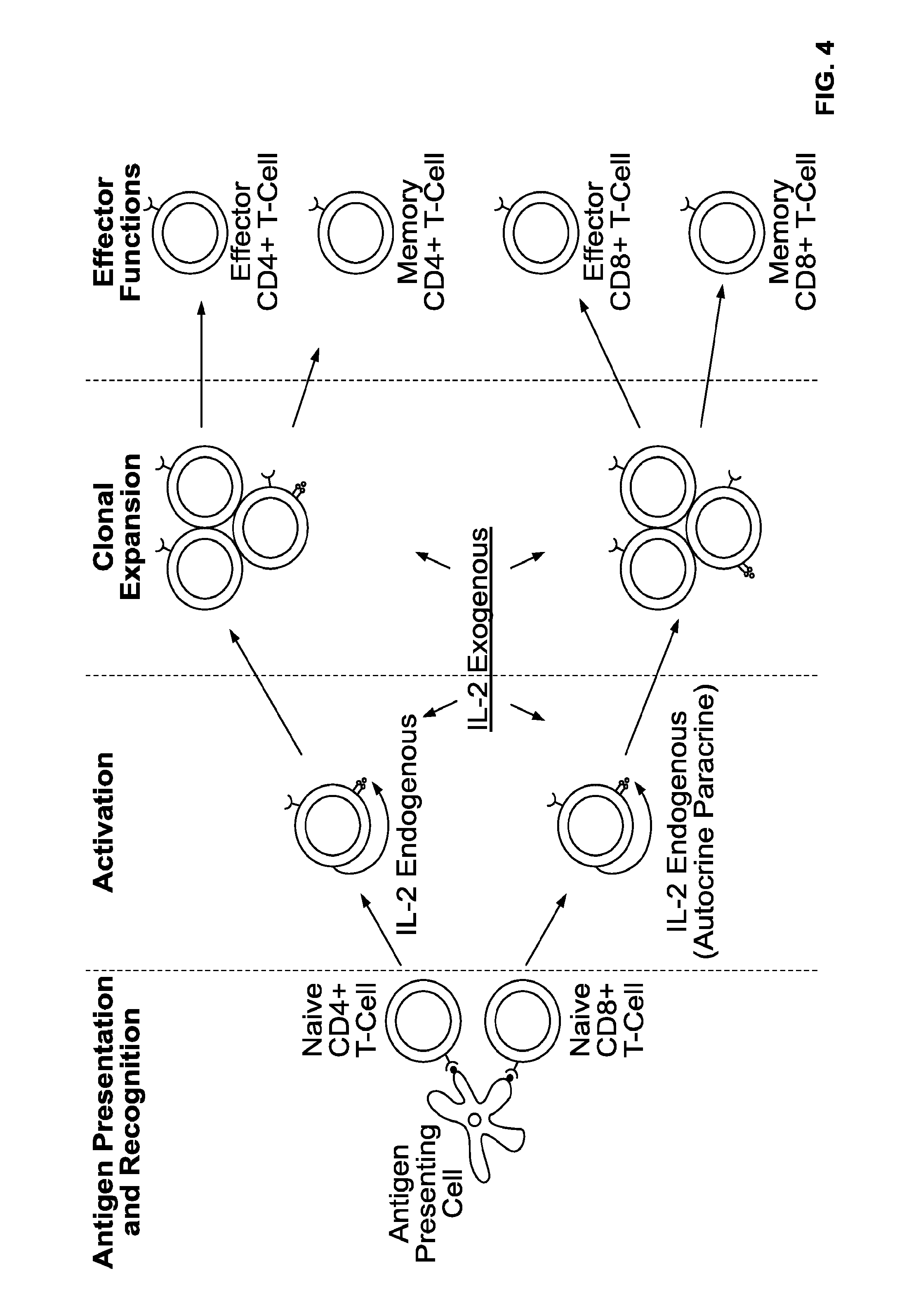Neoadjuvant treatment of cancer with proleukin
a cancer and proleukin technology, applied in the field of neoadjuvant treatment of cancer with proleukin, can solve the problems of insufficient or suboptimal objective response rate, improve diagnostic accuracy, and improve the effect of accuracy
- Summary
- Abstract
- Description
- Claims
- Application Information
AI Technical Summary
Benefits of technology
Problems solved by technology
Method used
Image
Examples
example i
[0106]Patients with stage III melanoma as identified by high-resolution ultrasonography and fine needle aspiration cytology (FNAC) will be treated. Prior to ultrasonography, the diagnosis of melanoma will have been made based on removal of a skin lesion showing malignant melanoma cells by histology. Patients will receive recombinant IL-2 administered s.c. in the area of the primary lesion for 4 weeks in a thrice weekly regimen prior to complete regional lymph node dissection. In one embodiment, the dose applied will be about 110000 ng of IL-2 (110 μs or 1.8 million IU) per dose administration. In other embodiments, even lower doses would be effective. In certain embodiments, the doses will be about 1000 ng per dose administration resulting in a total dose of 12 μg of IL-2 administered over a period of 4 weeks using a thrice weekly dosing schedule.
[0107]After completion of the 4 weeks of local neo-adjuvant IL-2 therapy the patient may undergo complete regional lymph node dissection. ...
example ii
[0108]Patients with stage I-II melanoma, as identified by a biopsy or surgical removal of the primary lesion, showing malignant melanoma cells by histology, would be treated. Patients will receive recombinant IL-2 administered s.c. in the area of the primary lesion for 4 weeks in a thrice weekly regimen prior to SLNB or complete regional lymph node dissection. The dose applied will be about 100-10000 ng per injection. Based on theoretical considerations on lymphatic drainage, an optimal dose would be about 1000 ng per dose administration resulting in a total dose of 12 μg of IL-2 administered over a period of 4 weeks using the thrice weekly dosing schedule. Depending on the location of the primary lesion, the patient may be able to self administer the doses of IL-2.
[0109]After completion of the 4 weeks of local neo-adjuvant IL-2 therapy the patient may undergo biopsy of the sentinel node(s) or in some cases complete regional lymph node dissection, as considered appropriate by the tr...
example iii
[0110]Patients with breast cancer treated with insertion of a catheter after surgical removal of the primary lesion and subsequent local administrations of IL-2 for a period of about 4 weeks prior to the possible removal of sentinel lymph node(s) or cLND.
PUM
| Property | Measurement | Unit |
|---|---|---|
| time | aaaaa | aaaaa |
| time | aaaaa | aaaaa |
| time | aaaaa | aaaaa |
Abstract
Description
Claims
Application Information
 Login to View More
Login to View More - R&D
- Intellectual Property
- Life Sciences
- Materials
- Tech Scout
- Unparalleled Data Quality
- Higher Quality Content
- 60% Fewer Hallucinations
Browse by: Latest US Patents, China's latest patents, Technical Efficacy Thesaurus, Application Domain, Technology Topic, Popular Technical Reports.
© 2025 PatSnap. All rights reserved.Legal|Privacy policy|Modern Slavery Act Transparency Statement|Sitemap|About US| Contact US: help@patsnap.com



